Pendant of square harness. Pendant
Pendant of square harness. Pendant
From Wikipedia, the free encyclopedia
Piece of jewelry made to hang from a cord, chain, ribbon or necklace
This article is about the jewellery. For the condition of something hanging, see pendent . For other uses, see Pendant (disambiguation) .
Not to be confused with pedant .
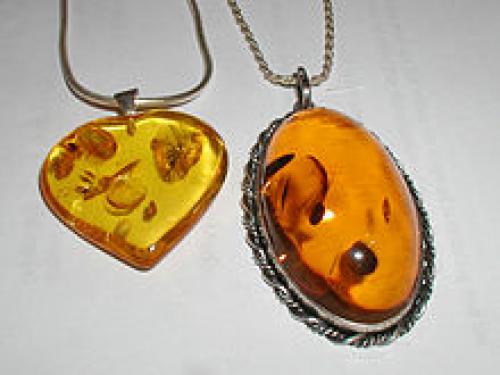
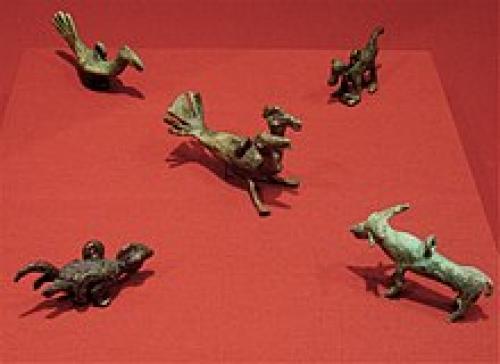
In some cases, though, the separation between necklace and pendant is far clearer.
Overview
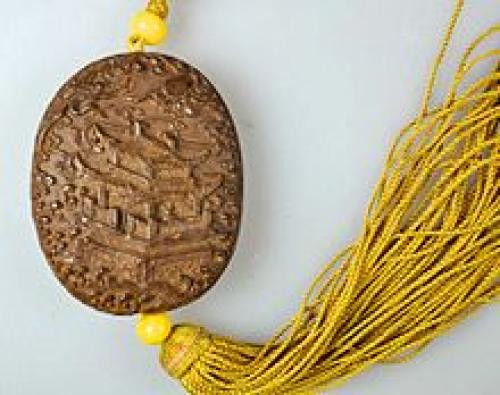
Pendants are among the oldest recorded types of bodily adornment. Stone, shell, pottery, and more perishable materials were used. Ancient Egyptians commonly wore pendants, some shaped like hieroglyphs .
Pendants can have several functions, which may be combined:
The many specialized types of pendants include lockets which open, often to reveal an image, and pendilia , which hang from larger objects of metalwork .
Types
Throughout the ages, pendants have come in a variety of forms to serve a variety of purposes.
Amulet
Though amulets come in many forms, a wearable amulet worn around the neck or on the arm or leg in the form of a pendant is the most common. These are objects believed to possess magical or spiritual power to protect the wearer from danger or dispel evil influences.
Talisman
Similar to an amulet , a talisman is an object believed to possess supernatural traits. However, while an amulet is strictly a defensive object, a talisman is meant to confer special benefits or powers upon the wearer.
Locket
A locket is a small object that opens to reveal a space which serves to hold a small object, usually a photograph or a curl of hair. They typically come in the form of a pendant hanging from a necklace, though they will occasionally be hung from a charm bracelet.
Medallion
A medallion is most often a coin-shaped piece of metal worn as a pendant around the neck or pinned onto clothing. These are generally granted as awards, recognitions, or religious blessings.
Painting
Main article: Pendant painting
Pendant is the name given to one of two paintings conceived as a pair.
Functional pendants
Tools worn as pendants include Maori. Shepherd's whistles , bosun's whistles , and ocarinas can also be made as pendants. Portable astronomical and navigational instruments were made as pendants.
In the first decade of the 21st century, jewellers started to incorporate USB flash drives into pendants.
Fashion pendants
Fashion pendants include a small creative piece often made from precious or non-precious stones and metals like diamonds or pearls hanging freely from a chain or necklace. These are generally worn as a statement piece or a fashion ornament.
Horse-harness mount. Characteristics
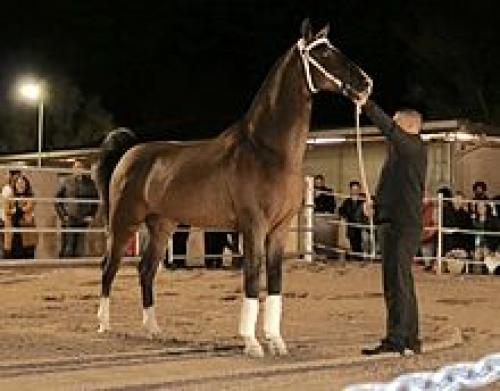
The Dutch Harness Horse is distinctive among warmbloods for its high action, and gaining popularity among those saddle seat aficionados who seek a larger, more substantial horse. They are traditionally shown with a braided mane and natural tail, and when shown in-hand often wear a white bridle without a cavesson . The hooves are usually allowed to grow longer than a riding horse's feet, but are never shod with. While the colors black , brown, bay and chestnut are most common, there are greys , true roans , and creme dilutes . Tuigpaarden are often very well-marked, and many have extensive sabino or rabicano markings. There are even some tobianos , though they are rare.
The expressive head is made up of straight lines and distinctly warmblood in type. It is usually narrow, long and quite dry, similar to the Saddlebred .
The neck is set on quite high, and the shoulders are uniformly long and powerful. The carriage of the head and the level croup with high-set tail distinguish the harness horses from their riding-type relatives. The longer back, more open loin, and flatter croup enable the hindlegs and forelegs to work independently and with great action. By comparison, the harness horse appears to stand higher off the ground.
Strict selection procedures mean that the Dutch Harness Horse is reasonably uniform in type and motion, and also means that the gait qualities of the horses are inherent. As the show horses are not asked to canter in harness, this gait receives less attention. The walk is diligent, but the trot is the true show gait. The forelegs are typically longer than the hindlegs - by design - and as such the horse will "sink" in the back and rise in the front. This quality is responsible for the powerful, active hind end and the great freedom in the forehand. These horses usually have a metronomic trot and ample suspension.
In comparison to the riding horse type , the Tuigpaarden are more hot and sensitive to the energy of a crowd. However, with the control of the stallion inspections , bad-tempered horses or those with poor constitutions are at the very least identified, if not culled outright. A dangerous stallion would never obtain breeding permission in the first place, and so the breed is reactive and courageous, but pleasant and kind.
Branding is now illegal in the Netherlands, so the lion-rampant brand of the KWPN appears on the left thigh of only older horses. Today, KWPN horses are microchipped instead.
The letter which begins a Dutch Harness Horse's name corresponds to his year of birth. Daughters are often given only a very slight variation of the dam's name, for example: 1988 was the "G" year, so the daughter of a mare named "Zilvia" was "Gilvia".
Metal Detecting Finds identification. Best Metal Detecting Finds on YouTube
Top 5 Metal Detecting Finds on YouTube
You don’t have own a metal detector to appreciate the amazing items that have been found by treasure hunters. As an avid metal detectorist I love watching what others have found. Whether it be searching for gold nuggets, jewelry, or relics, YouTube has some of the best metal detecting finds around. Below are some of my favorite treasure hunting videos because they really define how amazing metal detecting is and also that you never know what you can find!
The Anglo-Saxon Gold Hoard:
This was discovered in 2009 by a metal detectorist in England. It was found on a recently plowed field where the detectorist had received prior permission to hunt. While the actual finding of the treasure was not documented the video provides a great analysis of everything found as well as a great back story. They also detail the process of archeologists to preserve all the items found in the hoard. Click here to learn more about relic hunting metal detectors . The reason I like this video is because I love the story of the detectorist and the history behind this find is amazing. This is what every relic hunter strives to find!
River Crossing Silver Hoard:
This silver coin hoard was found in the United States. The person who found this regularly hunts river crossings for civil war artifacts. The reasons as to why this amount of coins would be in this location has produced many theories. Watch the video and decide how you think they all got there. The condition that the coins are in is almost perfect, showing how well the mud preserved each of the coins. This was found with a Garrett AT Pro Metal Detector which is a great waterproof relic hunting machine. I enjoyed this video because we get to watch as the coins are being found. Watching this video really makes you want to go detecting!
Huge Gold Nugget:
This news story details the finding of a huge gold nugget. I don’t blame the owner for wanting to remain anonymous! Finding gold nuggets this large is thought to be impossible today but gold nugget hunters are still finding decent sized nuggets in California, Arizona, and Australia. You need a specialized metal detector when searching for gold in its raw form because nuggets are rarely this size!
Beach Hunting Treasure:
I didn’t want to exclude the amazing finds that beach hunters make. I am a beach hunter myself and seeing how much gold these guys found is amazing. Click here to learn more about beach metal detecting What is so great about hunting the beach is that you have the potential to find both new and old items. After a major storm to possiblity of finding old coins and relics is very high while hunting after a busy summer weekend can reward someone metal detecting with a nice piece of jewelry. You just never know what you can find!
A Strange Briefcase:
I like this one because there is so much build up with what will be in the briefcase. This video turns into a lesson for all detectorists and treasure hunters alike. Be careful! This could have gone many different ways and the finder is lucky something bad didn’t happen. But he did do the right thing by calling the authorities. Please keep in mind, this video has some strong language.
Metal detecting can be a lucrative hobby but keep in mind these people above hit the lottery so to speak. These are not the finds of a typical metal detectorist. However, these are examples of people who put in the research to find the great items under the ground, not to mention luck. What they don’t show is all the junk that they had to dig up along the way to find these great items. Keep in mind, metal detecting rewards patience and dedication. That includes having reasonable expectations by not expecting to dig up ancient treasure every time you go detecting. You have to keep in mind all the other great things about detecting such as being outside, getting a little bit of exercise, detecting with friends, learning about history through the finds you make, and the thrill of the hunt! If you are interested in metal detecting check out my beginner metal detecting webpage.
Harness Mounts
Introduction
There is an enormous variety of harness mounts, and they can be hard to distinguish from other mounted to straps in other circumstances. Primarily, but specifically, for medieval artefacts, use this term for the following:
- Shield-shaped mounts (and mounts of rarer forms) with integral rivets on their reverse (often called ‘studs’)
- Suspension mounts for harness pendants
- Mounts and other components that supportedand other complex decorative harness arrangements
PAS object type(s) to be used
Use HARNESS MOUNT, unless a, in which case use HARNESS PENDANT (or for a ‘banner’ surviving with its mount)
HORSE TRAPPING overlaps in scope with HARNESS MOUNT and thus should not be used.
PAS object classification and sub-classification to be used
Use pendant suspension mount in the classification field, as applicable, and/or heraldic , as applicable – heraldic where both apply
For shield-shaped mounts (and mounts of rarer forms) with integral rivets on their reverse put stud in the sub-classification field
Roman harness mounts
As with all periods distinguishing mounts from harness from other objects mounted to straps is difficult., 374-395) pls 63-84 is a useful starting point for those mounts with integral rivets and loops thought to be associated with harness straps, including pendant suspension mounts.
Early-medieval harness mounts
Various mounts specifically from early early-medieval harnesses are addressed by). It is entirely plausible that many mounts from the late early-medieval period have not been recognised as such; there is a large quantity of en suite equestrian material on the PAS database. Certainly, recognised pendant suspension mounts are few and far between; the pendants of the period are discussed in the.
Medieval harness mounts
A group of chunky mounts differ from most medieval strap-fittings in having integral rivets. It is not impossible that these mounts were also fixed to things other than horse-harness, but they are so similar toin their construction, decoration and so on that it seems likely that this was their primary use.
Griffiths 1989 shows a number of heraldic mounts, of which nos 3-6 and 11-13 are likely to be horse accessories, with no. 14 being a. The small stud (up to 20 mm in height), with long integral rivet (no. 4a), is of a type found in situ on a stirrup quoted by, 1, 3; no. 4a) which would have connected the stirrup’s apex and the stirrup strap (see also, 15; fig. 15). Although nos 5 and 6 are identified as brooches, they are large and can be rather crudely made, with none of the delicacy often found on medieval jewellery. They do not always have heraldic decoration, and seem much more likely to be specialised harness accessories rather than dress accessories. The other mounts in this Datasheet – particularly those with rivet holes – are less certainly to be from horses, and could easily be from boxes,

Heraldic pendants. ФРАНЦУЗСКАЯ ЛИЛИЯ - ОДНА ИЗ САМЫХ ПОПУЛЯРНЫХ ГЕРБОВЫХ ФИГУР И СИМВОЛ КОРОЛЕВСКОЙ ВЛАСТИ
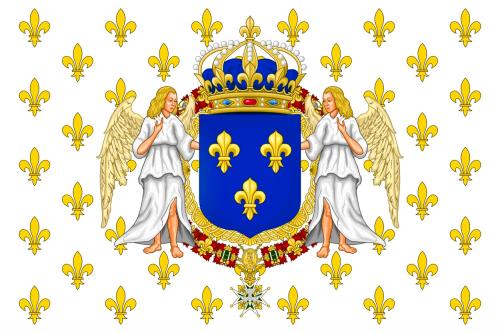 «Я полевой цветок и долинная лилия» (Библия, Песн. 2:1).«Что лилия между тернами, то возлюбленная моя между девицами» (Библия, Песн. 2:2). Появление лилии в качестве высшего геральдического символа французской королевской власти, неразрывно связано с именем короля Хлодвига Первого, крестителя Франции и его жены Клотильды.Кольцо «Французская лилия» на нашем сайте: Предыстория появления этого знака такова — король франков, язычник Хлодвиг (Кловис) женился на христианке Клотильде (Хродехильде), дочери бургундского короля Хильперика II и племяннице другого бургундского короля Гундобада (в соседней Бургундии трон между собой делили четыре брата — Гундобад, Годегизель, Хильперик II и Годомар I ). Как водится, такое количество претендентов на корону, вызывало постоянные междуусобицы. Так Гундобад зарубил мечом своего брата Хильперика, а также приказал скинуть в воду его жену, предварительно привязав ей камень на шею. Двух дочерей Хильперика коварный Гундобад изгнал — старшей Кроне пришлось уйти в монастырь и неизвестно какая бы участь постигла младшую Клотильду, если бы послы Хлодвига в Бургундии не узнали об этом проишествии и не оценили красоту и ум молодой королевны. Не мешкая, Хлодвиг отправил посла к Гундобаду с просьбой отдать ему Клотильду в жёны. Гундобад, не желая ссориться с королём франков, согласился, и Хлодвиг женился на Клотильде. При том, что королевский дом Бургундии придерживался еретического арианского исповедания, Клотильда под влиянием своей матери Каретены уже приняла ортодоксальное христианство, основанное на Никейском символе веры.
«Я полевой цветок и долинная лилия» (Библия, Песн. 2:1).«Что лилия между тернами, то возлюбленная моя между девицами» (Библия, Песн. 2:2). Появление лилии в качестве высшего геральдического символа французской королевской власти, неразрывно связано с именем короля Хлодвига Первого, крестителя Франции и его жены Клотильды.Кольцо «Французская лилия» на нашем сайте: Предыстория появления этого знака такова — король франков, язычник Хлодвиг (Кловис) женился на христианке Клотильде (Хродехильде), дочери бургундского короля Хильперика II и племяннице другого бургундского короля Гундобада (в соседней Бургундии трон между собой делили четыре брата — Гундобад, Годегизель, Хильперик II и Годомар I ). Как водится, такое количество претендентов на корону, вызывало постоянные междуусобицы. Так Гундобад зарубил мечом своего брата Хильперика, а также приказал скинуть в воду его жену, предварительно привязав ей камень на шею. Двух дочерей Хильперика коварный Гундобад изгнал — старшей Кроне пришлось уйти в монастырь и неизвестно какая бы участь постигла младшую Клотильду, если бы послы Хлодвига в Бургундии не узнали об этом проишествии и не оценили красоту и ум молодой королевны. Не мешкая, Хлодвиг отправил посла к Гундобаду с просьбой отдать ему Клотильду в жёны. Гундобад, не желая ссориться с королём франков, согласился, и Хлодвиг женился на Клотильде. При том, что королевский дом Бургундии придерживался еретического арианского исповедания, Клотильда под влиянием своей матери Каретены уже приняла ортодоксальное христианство, основанное на Никейском символе веры.